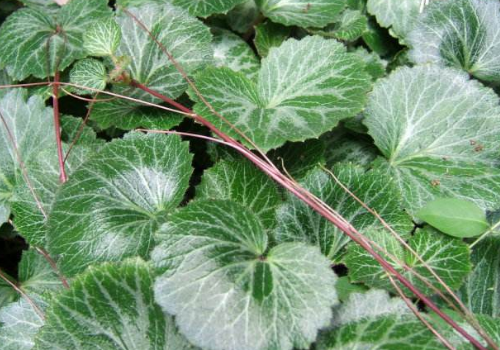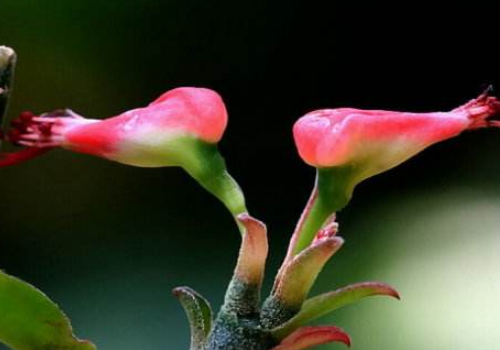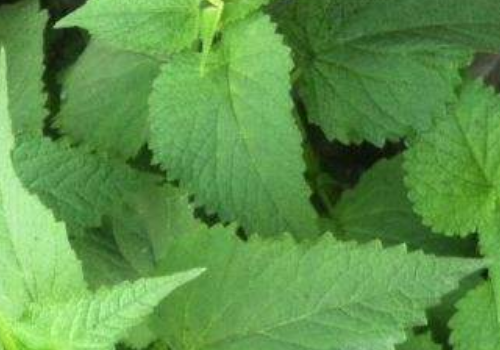Can Saxifraga treat otitis media by hydroponics?
Saxifraga has high medicinal value, but it can not treat urticaria, so does Saxifraga treat otitis media? Can it be hydroponically cultured:
Does Saxifraga treat otitis media:
Saxifraga has the effect of anti-inflammation and detumescence, which can indeed help patients with otitis media, but it may not be cured.
There are many causes of otitis media, such as neurotic otitis media, should be the treatment of nerve-based drugs, Saxifraga in this respect will not be good.
And if it is a very serious otitis media patients, such as deafness, Saxifraga treatment in this case, will not have much effect.

Can Saxifraga be hydroponically cultivated?
Saxifraga likes a moist environment and can grow purple stolons at the base, so it is a very suitable plant for hydroponics. Placed on the balcony or living room, or hanging on the wall, are very unique and novel home decorations.
Saxifraga is fond of yin and dampness, and is resistant to barren, so it is especially suitable for raising with clear water indoors.
The main results are as follows: 1. Saxifraga has short plant type and strange and beautiful leaves, so it is suitable to be placed in a small indoor space or can be planted by suspension. Saxifraga can effectively absorb carbon dioxide, produce oxygen and increase the content of negative ions in the air.
2. Saxifraga can convert nitrogen oxides into proteins in plant cells and play a role in purifying air. Therefore, it is a kind of flowers that are very suitable for indoor display, which can not only be watched, but also beneficial to health.
Saxifraga can be used as the best decoration of rockery water stone when it is used in gardening.
What is the difference between Saxifraga and Saxifraga? can Saxifraga be cultured in water?
Saxifraga is widely distributed in China, and it is more common in rural areas. As the value of Saxifraga has been widely excavated in recent years, many flower growers like to plant a pot of Saxifraga in balconies, courtyards and other places. But another kind of plant called Saxifraga bears some resemblance to Saxifraga, which is often foolishly confused. Let's find the differences between them.
What is the difference between Saxifraga and Saxifraga
1. Morphological characteristics.
Saxifraga: slender whip branches, densely curly long glandular hairs, with scaly leaves. Basal leaves long stipitate, leaf blade subcordate, reniform to oblate, lobes margin with irregular teeth and glandular eyelashes, ventral green, glandular hairy, abaxially usually reddish purple, glandular hairy, spotted, with palmately marginal venation, cauline leaves lanceolate. Cymes paniculate, flowers bilaterally symmetrical; flowering and fruiting April-November.
Saxifraga: rhizome thick and short, obliquely ascending, densely covered with linear brown scales. Leaves proximal; petiole 7-15 cm tall, brown-black, glossy, 7-14 pairs of pinnae on both sides, alternate, pinnae ovoid to ovoid-rectangular, entire, pinnae sectioned, stalked, upper ones sessile; leaves thickly papery, densely covered with slender rust hairs on both surfaces, especially below; veins flabellate.
2. Medicinal value
Saxifraga: dispelling wind, clearing heat, cooling blood and detoxification. Treatment of rubella; eczema, otitis media, erysipelas, cough, hematemesis, pulmonary carbuncle, bleeding, hemorrhoids.
Saxifraga: treat rheumatic joint pain, abdominal pain, malaria, carbuncle swelling.
3. Different families and genera
Saxifraga: Saxifraga is the whole grass of Saxifraga.
Aristolochia mandshurica: the rhizome or whole grass of Aristolochia woolly Aristolochia.
Can Saxifraga be cultured in water?
Saxifraga likes a moist environment and can grow purple stolons at the base, so it is a very suitable plant for hydroponics. Placed on the balcony or living room, or hanging on the wall, are very unique and novel home decorations. Saxifraga is fond of yin and dampness, and is resistant to barren, so it is especially suitable for raising with clear water indoors.
Hydroponic culture method of Saxifraga
I. Plant selection
Spring and autumn is the growing period of Saxifraga. Select 1 or 2 new saplings of Saxifraga with strong growth, wash the soil from the roots and set aside.
II. Specific operation
A transparent glass container is put into a stone to fix the plant and is also an ornament. And then pour in the water. Put Saxifraga and keep the water below the rhizome of Saxifraga.
Third, water training and nursing skills
1. Moisture
Water should be added in time when the water level is low, and water should be changed in time when the water is muddy. It is usually changed every 10 days or so. The root system is easy to rot in high temperature, so you should change the water frequently, and at the same time, pay attention to clean the container and keep it clean. When the air is dry, it can spray around the plant and increase the humidity to facilitate the plant growth. The wilting of leaves should be removed in time.
2. Lighting
Saxifraga must be cultured in a semi-shady environment in order to reflect the beauty of its leaves. Saxifraga can be difficult to survive in places where the sun shines all day. If the light is too strong, the leaves will be burned. If the light is too weak, the color of the leaves will be very dim and not fresh enough. Proper shading treatment should be carried out in spring, summer and autumn, and light maintenance should be carried out with brighter scattered light.
IV. Matters needing attention in hydroponics
1. Rotten root
Of course, Saxifraga is not immune to the things that all hydroponic plants need to pay attention to. A part of the plant is soaked in water, of course, it is easy to rot. After the root system is rotten, the rotten parts should be cut off in time, and the water culture should be changed again after drying.
2. The leaves are yellowing
Too much water will affect the respiration of plants, and the leaves are prone to yellowing and wilting, because with more water, there is less oxygen.
So every time to change the basin need to clean the container wall, reduce the growth of microorganisms, more microorganisms, consume more oxygen, compete with the plant. Leaves yellowing, should be removed in time, at the same time pay attention to check insect pests and diseases, timely spraying.
Horticultural uses of Saxifraga
The main results are as follows: 1. Saxifraga has short plant type and strange and beautiful leaves, so it is suitable to be placed in a small indoor space or can be planted by suspension. Saxifraga can effectively absorb carbon dioxide, produce oxygen and increase the content of negative ions in the air.
2. Saxifraga can convert nitrogen oxides into proteins in plant cells and play a role in purifying air. Therefore, it is a kind of flowers that are very suitable for indoor display, which can not only be watched, but also beneficial to health. Saxifraga can be used as the best decoration of rockery water stone when it is used in gardening.
These are the differences between Saxifraga and Saxifraga. Although they are somewhat similar in appearance, familiar flower friends will find that there are many differences when they identify them carefully. Everyone should observe carefully when buying, so as not to be cheated by unscrupulous merchants!
- Prev

Why cardinals don't blossom and how to grow them
Cardinals are so popular, how to raise them? Why don't cardinals blossom? How to raise: why cardinals don't blossom: temperature, native to the Central American West Indies. Sexual preference for warmth, suitable for living in sunny but not too strong and well-ventilated places. If the temperature is too high, the semi-overcast condition can also be adapted.
- Next

How to grow patchouli? can you raise it at home?
Patchouli has many uses, and many people want to grow it themselves. How do you grow patchouli? Can I keep it at home? How to grow patchouli: Xiangyang, low mountains, hills, flat dams, well drained, deep and fertile sandy soil or loam should be selected. Land preparation, the land that will be selected from Qingming Festival to Grain Rain
Related
- Fuxing push coffee new agricultural production and marketing class: lack of small-scale processing plants
- Jujube rice field leisure farm deep ploughing Yilan for five years to create a space for organic food and play
- Nongyu Farm-A trial of organic papaya for brave women with advanced technology
- Four points for attention in the prevention and control of diseases and insect pests of edible fungi
- How to add nutrient solution to Edible Fungi
- Is there any good way to control edible fungus mites?
- Open Inoculation Technology of Edible Fungi
- Is there any clever way to use fertilizer for edible fungus in winter?
- What agents are used to kill the pathogens of edible fungi in the mushroom shed?
- Rapid drying of Edible Fungi

